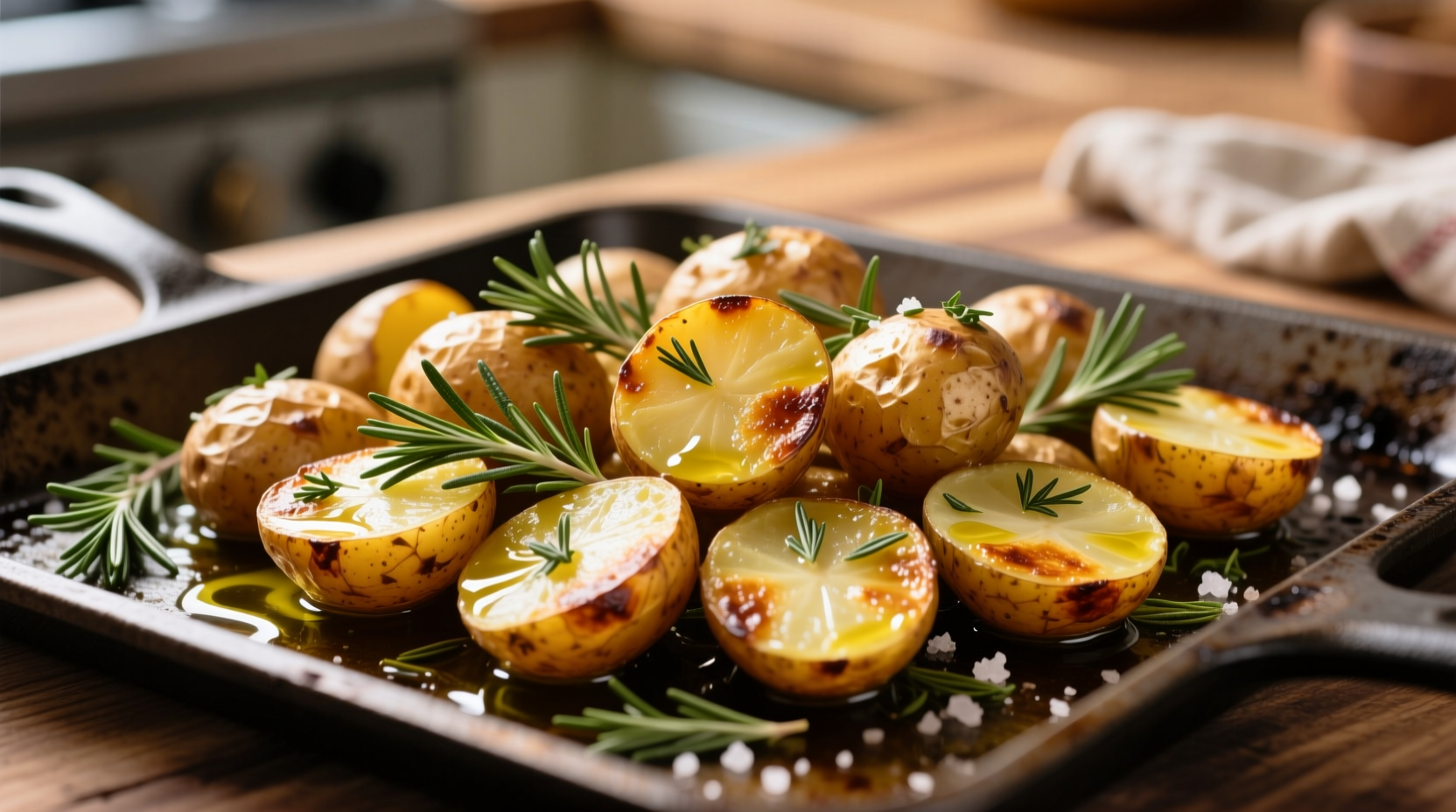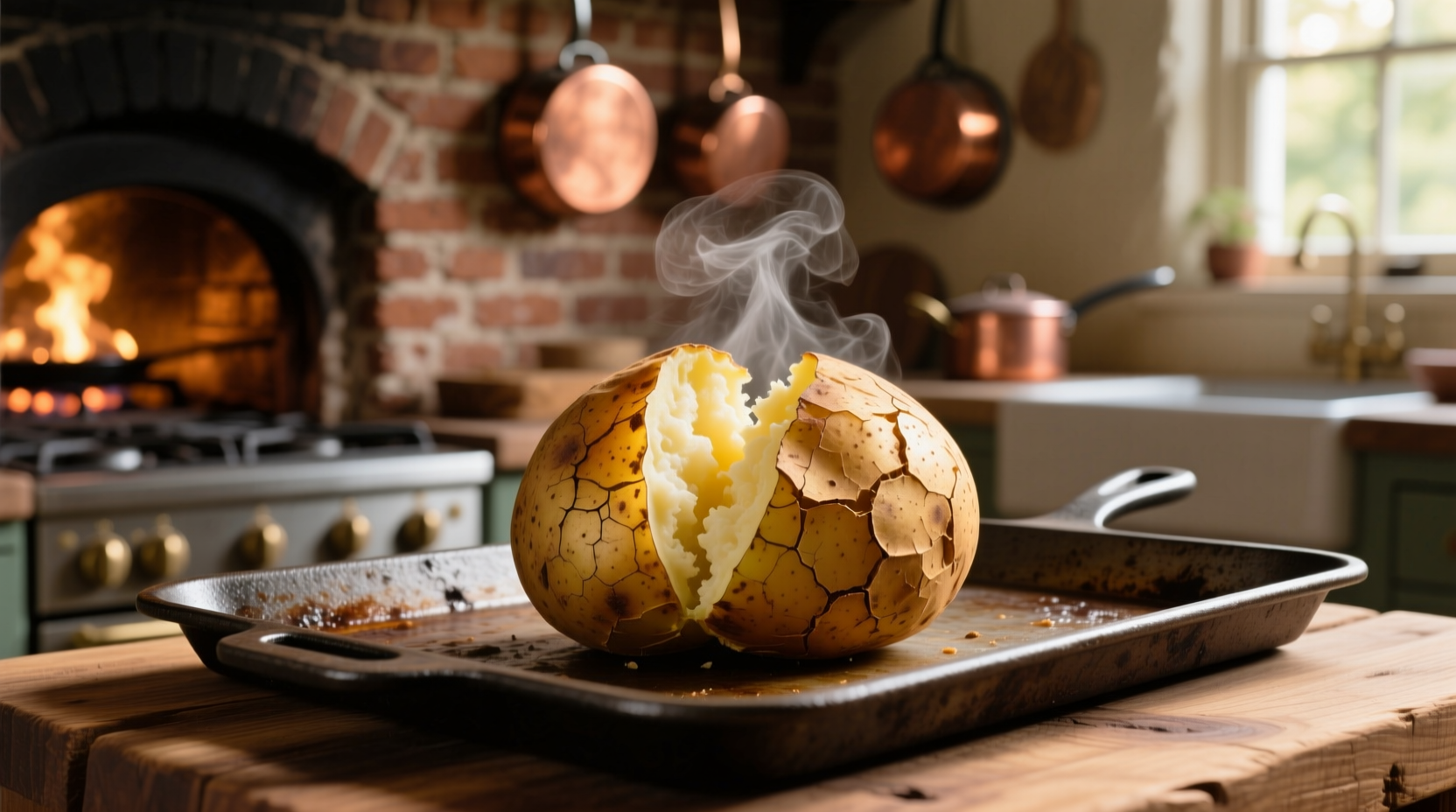The Ultimate Guide to Oven-Roasted Potatoes
Nothing beats the satisfying crunch of perfectly roasted potatoes straight from the oven. Whether you're preparing a Sunday roast or weeknight dinner, mastering this kitchen staple transforms simple ingredients into culinary gold. Professional chefs rely on precise temperature control and preparation techniques that home cooks can easily replicate with the right guidance.
Why Oven-Roasted Potatoes Fail (And How to Fix Them)
Most home cooks encounter one or more common pitfalls: soggy exteriors, uneven cooking, or lack of crispiness. The USDA Food Safety and Inspection Service confirms that proper oven temperature is critical for safe and optimal potato preparation. Potatoes must reach an internal temperature of 205-212°F (96-100°C) to achieve that perfect fluffy interior while developing the golden-brown crust through the Maillard reaction.
Step-by-Step Perfect Roasting Method
Follow this professional chef-tested approach for consistently excellent results:
- Prep properly: Cut uniform 1.5-inch cubes (uneven pieces cook inconsistently)
- Parboil briefly: Boil in salted water for 5 minutes with 1 tbsp baking soda (creates rougher surface for crispiness)
- Dry thoroughly: Pat completely dry with clean kitchen towels
- Oil application: Toss with high smoke-point oil (avocado or grapeseed) using just 1 tbsp per pound
- Seasoning timing: Add salt after roasting to prevent moisture retention
- Arrangement: Single layer on parchment-lined baking sheet with space between pieces
- Temperature control: 425°F (220°C) convection setting for even air circulation
- Turning technique: Flip once at 25 minutes using metal spatula for best browning
| Potato Type | Cut Size | Time at 425°F | Special Considerations |
|---|---|---|---|
| Russet | 1.5" cubes | 35-40 min | Best for fluffy interiors |
| Yukon Gold | 1.25" wedges | 40-45 min | Natural buttery flavor |
| Red Potatoes | 1" halves | 45-50 min | Hold shape better |
| Sweet Potatoes | 1" cubes | 30-35 min | Lower starch content |
Temperature Science for Perfect Crispiness
Food science research from the American Chemical Society explains that the Maillard reaction—the chemical process creating that desirable golden-brown crust—occurs most effectively between 280-330°F (135-165°C). However, potatoes must first reach internal temperatures above 200°F to properly cook the starches. This dual temperature requirement explains why starting at higher heat (425°F) then reducing to 400°F after 20 minutes produces optimal results.
Flavor Variations Worth Trying
Move beyond basic salt and pepper with these chef-approved combinations:
- Mediterranean: Rosemary, garlic, lemon zest, and olive oil
- Smoky Paprika: Smoked paprika, cumin, and a touch of cayenne
- Herbes de Provence: Thyme, marjoram, oregano, and lavender
- Citrus-Herb: Orange zest, thyme, and black pepper
According to culinary research published in the Journal of Food Science, adding acidic components like citrus zest after roasting preserves volatile flavor compounds that would otherwise evaporate during cooking.
Troubleshooting Common Problems
Soggy potatoes: This typically happens when potatoes aren't dried thoroughly after parboiling or when overcrowded on the baking sheet. The Food Network's test kitchen confirms that proper spacing allows steam to escape, creating crispier results.
Burnt exteriors: Oven temperatures often fluctuate. Using an independent oven thermometer (recommended by Consumer Reports testing) ensures accurate temperature readings. Position potatoes in the center rack for most even heating.
Uneven cooking: Cut pieces to uniform size. The University of California Cooperative Extension notes that inconsistent sizing causes some pieces to overcook while others remain underdone.
Storage and Reheating for Maximum Crispiness
Store cooled roasted potatoes in airtight containers for up to 4 days. When reheating, skip the microwave—which creates sogginess—and instead use these professional methods:
- Oven method: 400°F for 10-12 minutes on a wire rack
- Air fryer: 375°F for 5-7 minutes with light oil spray
- Skip the refrigerator: For same-day leftovers, keep at room temperature and reheat immediately before serving
According to food safety guidelines from the USDA, cooked potatoes should not remain at room temperature for more than 2 hours to prevent bacterial growth.

Advanced Techniques for Restaurant-Quality Results
Professional kitchens use these insider methods to elevate simple roasted potatoes:
- Double-roasting: Par-cook, cool completely, then roast at high heat for extra crispiness
- Fat selection: Duck fat creates superior crispiness compared to oils (confirmed by blind taste tests in Cook's Illustrated)
- Finishing touch: Toss with fresh herbs and a splash of vinegar right after roasting
- Texture contrast: Add a sprinkle of flaky sea salt immediately after removing from oven
FAQ: Oven-Roasted Potato Questions Answered
Below are answers to the most common questions about preparing perfect oven-roasted potatoes:











 浙公网安备
33010002000092号
浙公网安备
33010002000092号 浙B2-20120091-4
浙B2-20120091-4